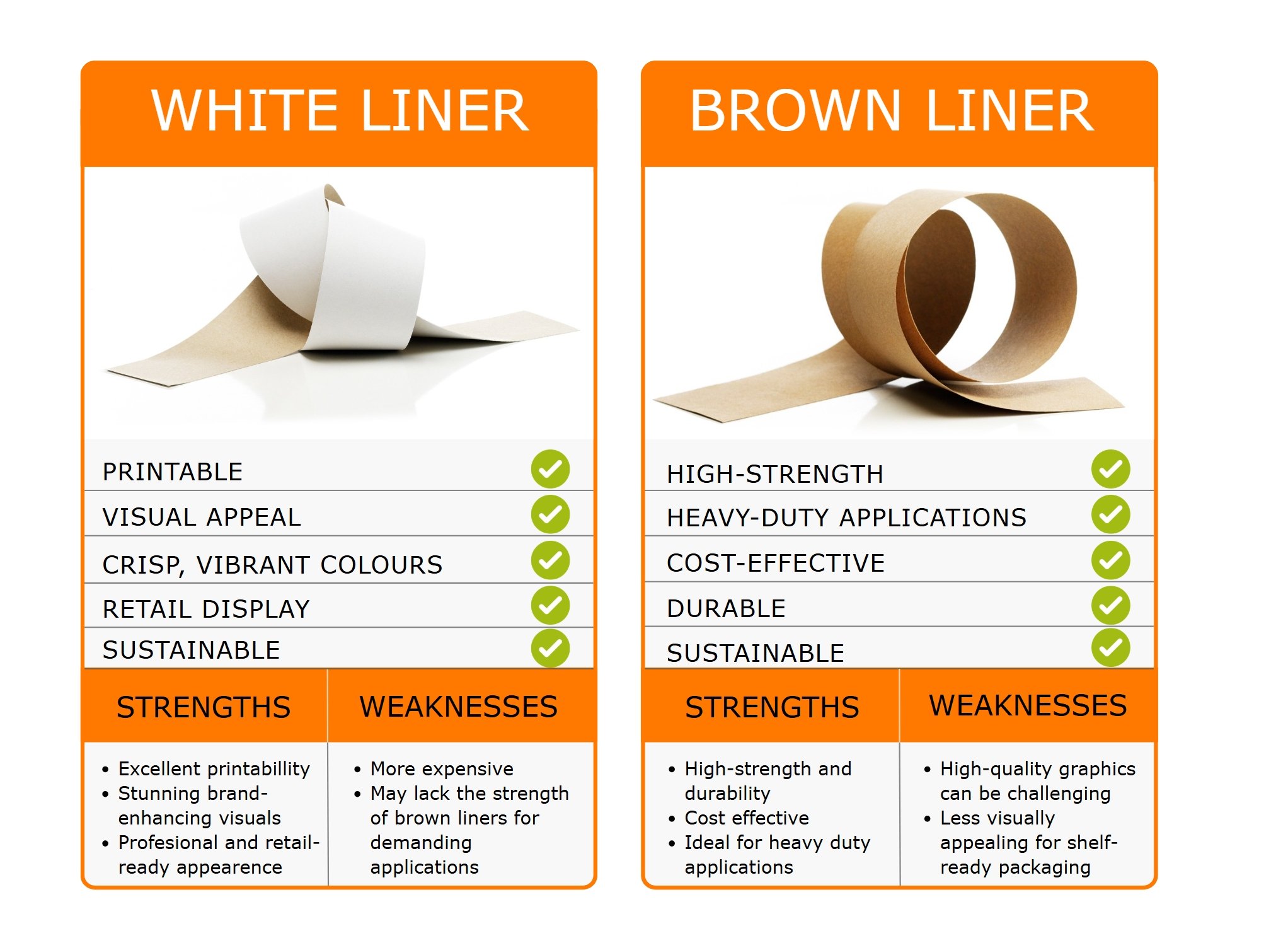White Liner vs. Brown Liner: Choosing the Right Paper for Your Packaging Needs
In the world of corrugated packaging, the liner paper plays a crucial role. It's the outer layer of the corrugated board, providing the surface for printing, protection, and overall structural integrity. But did you know there are different types of liner paper, each with its own strengths and weaknesses?
The two main contenders are white liner and brown liner, and understanding their differences is key to making the right choice for your specific packaging needs.
What is Liner Paper?
Liner paper is the flat sheet of paper that adheres to the corrugated medium (the wavy, fluted layer) to form corrugated board. It provides a smooth surface for printing graphics and text, and it also contributes to the overall strength and durability of the package. Think of it as the face and back of your corrugated box - it's what the world sees, and what protects the contents inside.
Brown Liner
Brown liner, often made from recycled fibres, is known for its robust strength and cost-effectiveness.
| Strengths | Weaknesses |
|
Brown liner boasts high strength and durability, making it ideal for heavy-duty applications like shipping and transportation. It's also generally more affordable than white liner, making it a budget-friendly option. Plus, its recycled content makes it a sustainable choice. |
The main drawback of brown liner is its limited printability. Achieving high-quality graphics and vibrant colours can be challenging on its surface. Its less visually appealing appearance might not be ideal for products where shelf presence and branding are paramount. |
White Liner
White liner offers a brighter, more visually appealing surface, making it a popular choice for retail and e-commerce packaging.
|
Strengths |
Weaknesses |
| White liner provides excellent printability, allowing for stunning graphics, crisp text, and vibrant colours that enhance brand recognition. Its clean, professional look makes it suitable for retail display and e-commerce, where visual appeal is crucial. |
White liner is generally more expensive than brown liner. While it offers excellent aesthetics, it might not always match the strength of brown liner, potentially requiring thicker or higher-grade materials for certain applications. |
Factors to Consider When Choosing Liner Paper:

Choosing between white and brown liner depends on several factors:
- Application: Consider how the package will be used. For shipping and transportation, brown liner's strength is a major advantage. For retail displays, white liner's visual appeal is key. E-commerce packaging requires a balance between protection and branding.
- Budget: White liner is generally more expensive than brown liner. Evaluate your budget and determine how much you're willing to invest in aesthetics versus cost savings.
- Sustainability: Both white and brown liner can be made from recycled content. Explore the recycled content options available from DS Smith and choose the most sustainable option for your needs.
- Printing and Branding: If high-quality printing and vibrant colours are essential for your brand, white liner is the clear choice. If a more rustic or understated look is acceptable, brown liner can be a viable option.
Our Paper Solutions:
At DS Smith, we offer a comprehensive range of both white and brown liners to meet your diverse packaging requirements. We can help you choose the perfect paper to optimise your packaging performance, reduce costs, and enhance your brand image.
The choice between white and brown liner paper is a critical decision that impacts both the functionality and aesthetics of your packaging. By carefully considering the factors outlined above, you can make an informed decision that aligns with your specific needs and budget.
Contact DS Smith today to discuss your packaging needs and discover the perfect liner paper solution for your business.